Taffeta is a fabric with unique properties. Many craftsmen do not like to work with this type of textile because of the fragility of the threads. But only such material can become the basis of a truly royal outfit for a significant celebration.
Such perceptions date back to the Middle Ages, when taffeta in many countries of the world was used exclusively for sewing clothes for kings, nobles and aristocrats. The cost of some types is still affordable only for the very rich.
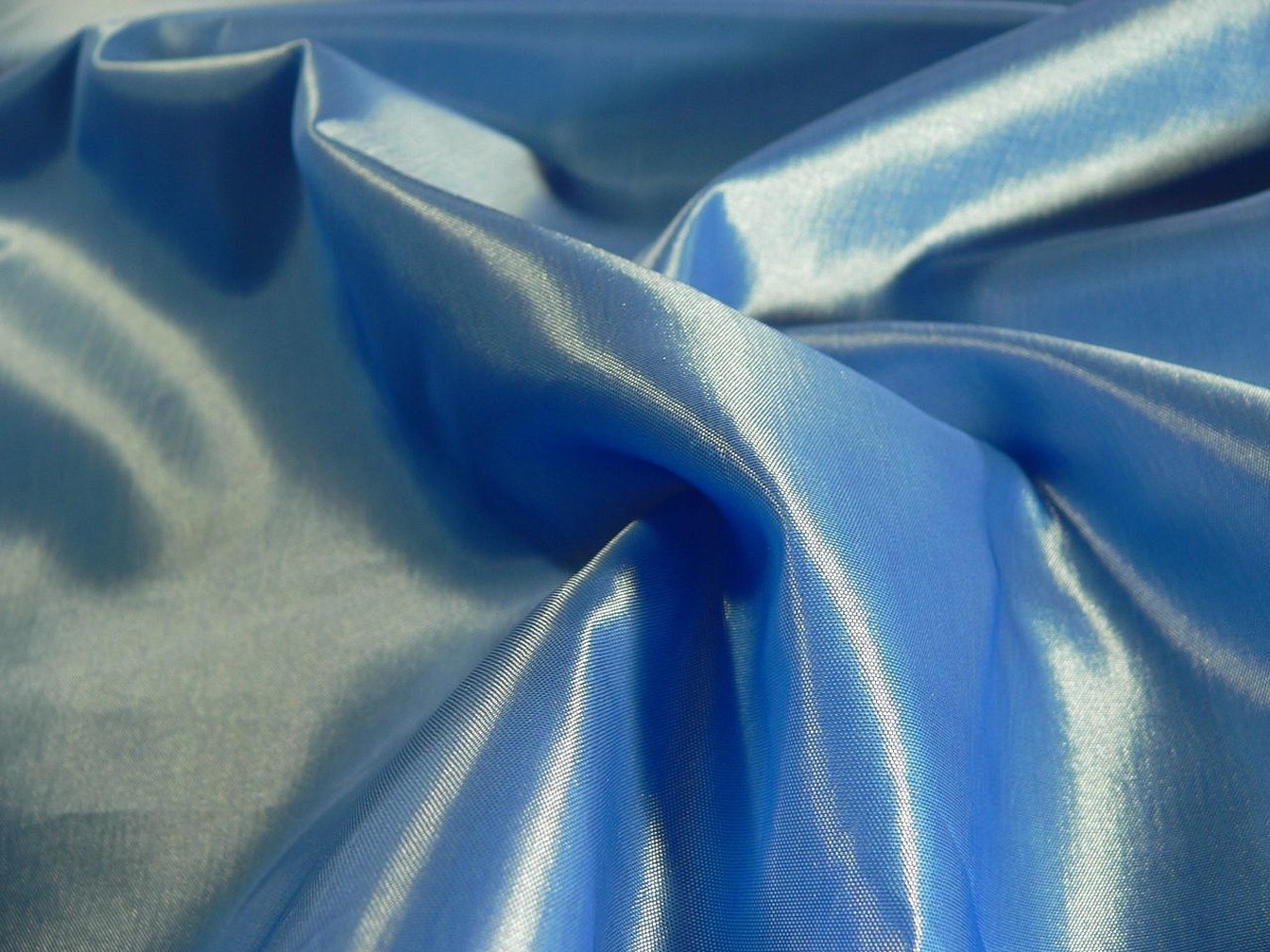
Fabric production
Not many people know what taffeta is from the point of view of textile production, since the name of the material is very unusual. Translated from Persian, it means "woven". The production of this type of fabric has several distinctive features:
- The threads are twisted and tightly intertwined.
- Linen or cotton fibers are used.
- Synthetic threads can be used.
- Before weaving, the threads are heated strongly so that after cooling they lie even more tightly.
Until 1990, taffeta had to be woven by hand, since uniform interlacing and twisting of threads could only be achieved by this method. And in 1991, a machine for the production of "royal" textiles was introduced in India.
Please note! Germany, England and France are also well-known exporters. These countries use Indian production technologies.
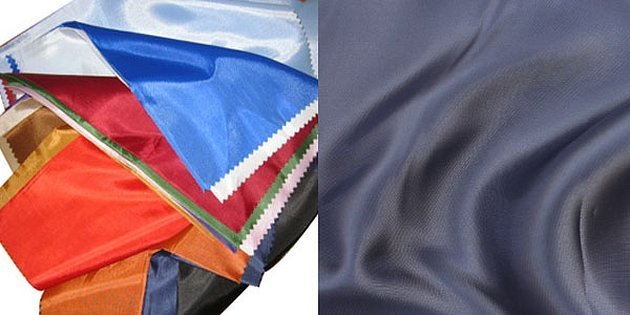
At present, this country remains the main supplier of taffeta to many countries of the world. The quality of Indian goods exceeds the capabilities of many European manufacturers, since the machines for manufacturing the material operate according to the manual principle of operation.
Material characteristics
To understand what exactly the material is, you need to read the description of its appearance, composition and mechanical properties. The main characteristic of the material is its appearance - the canvas has a glossy shine. Additional features of the material:
- The fabric can be thick or thin – it all depends on the type of fiber used in weaving.
- Smooth and pleasant to the touch base of the fabric from the inside and outside.
- Does not cause irritation or allergic reactions.
- It does not become magnetic or shift while being worn.
- Due to the dense arrangement of the fibers, the fabric does not lose its original visual properties for a long time.
- The fabric holds any shape remarkably well if draped.
- A variety of colors with plain and printed patterns.
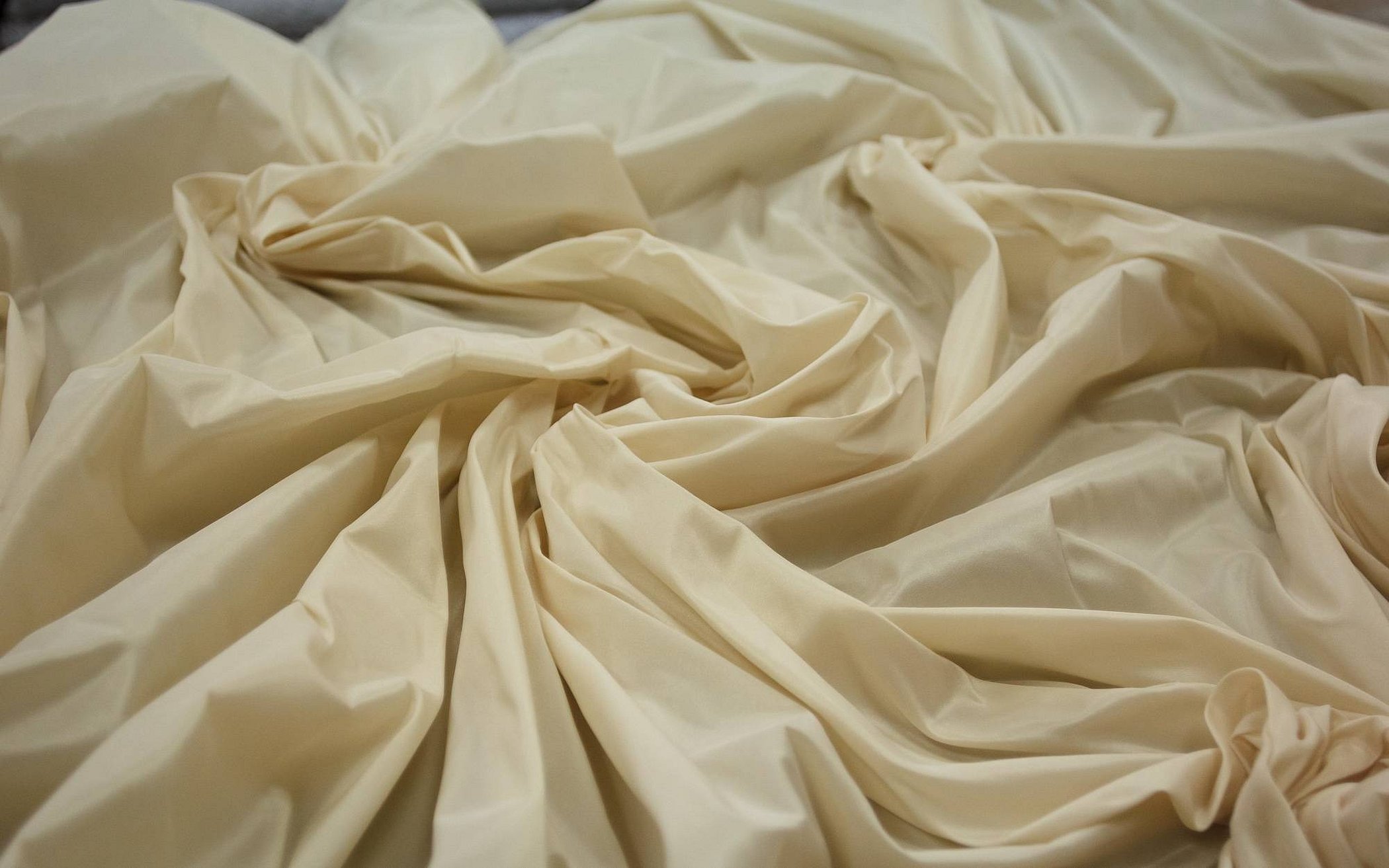
Fabric of this quality requires special care, which is carried out in several stages. Additional characteristics are determined by the specific type of taffeta and its composition.
Types of taffeta based fabrics
Taffeta is not a uniform fabric that has a specific type of weave and composition. There are several types of fabrics that have different descriptions. The differences are due to the threads used in the weaving process:
- Silk made from natural silk threads. It is expensive, but has many advantages – it “breathes”, does not let water through, is light, and looks elegant.
- Cotton. Thanks to the interweaving of these fibers, it is possible to obtain light textiles from which beautiful summer clothes are sewn.
- Viscose. Made from artificial fibers. Practically does not allow air to pass through, but is wear-resistant.
- Polyester. Like viscose, it is a completely synthetic option, but its quality and properties are much worse than its analogue.
Additional information! Mixed type. The fabric contains natural and artificial fibers in a certain proportion to achieve the desired effect.
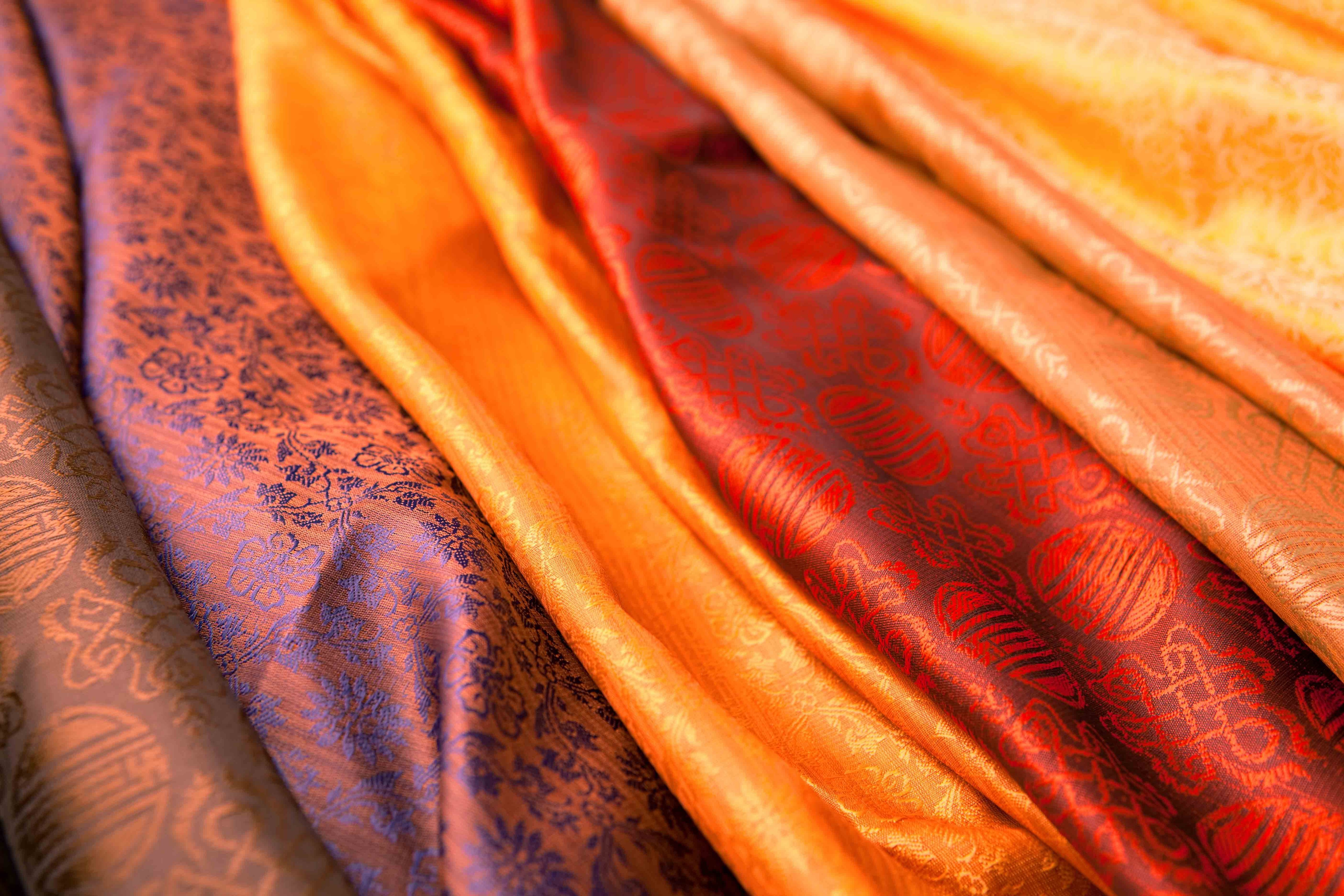
As for the color scheme, the single-color version and taffeta chanzhan stand out. It is chanzhan that provides a variety of colors and patterns.
Depending on the texture, taffeta is divided into crushed, smooth and printed.
Scope of application
Many people do not understand what taffeta fabric is and where it can be used. In fact, you can find an outfit made of such textiles everywhere. The most popular areas of application are:
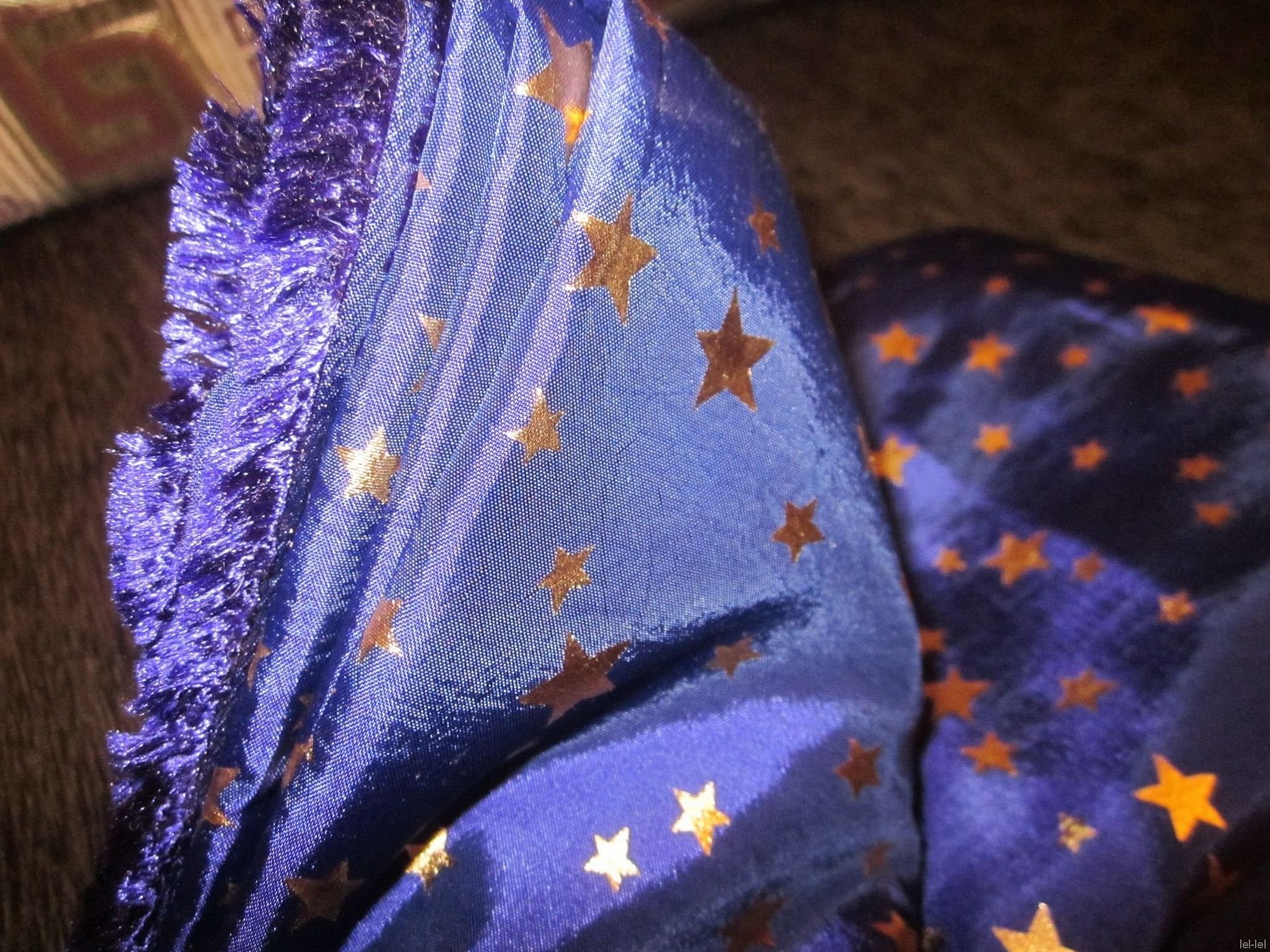
- Making wedding dresses.
- Sewing evening dresses and theatrical costumes.
- Curtain taffeta becomes the basis for curtains.
- The jersey is the basis for everyday sundresses and blouses.
- Can be used for decorating other things and drapery.
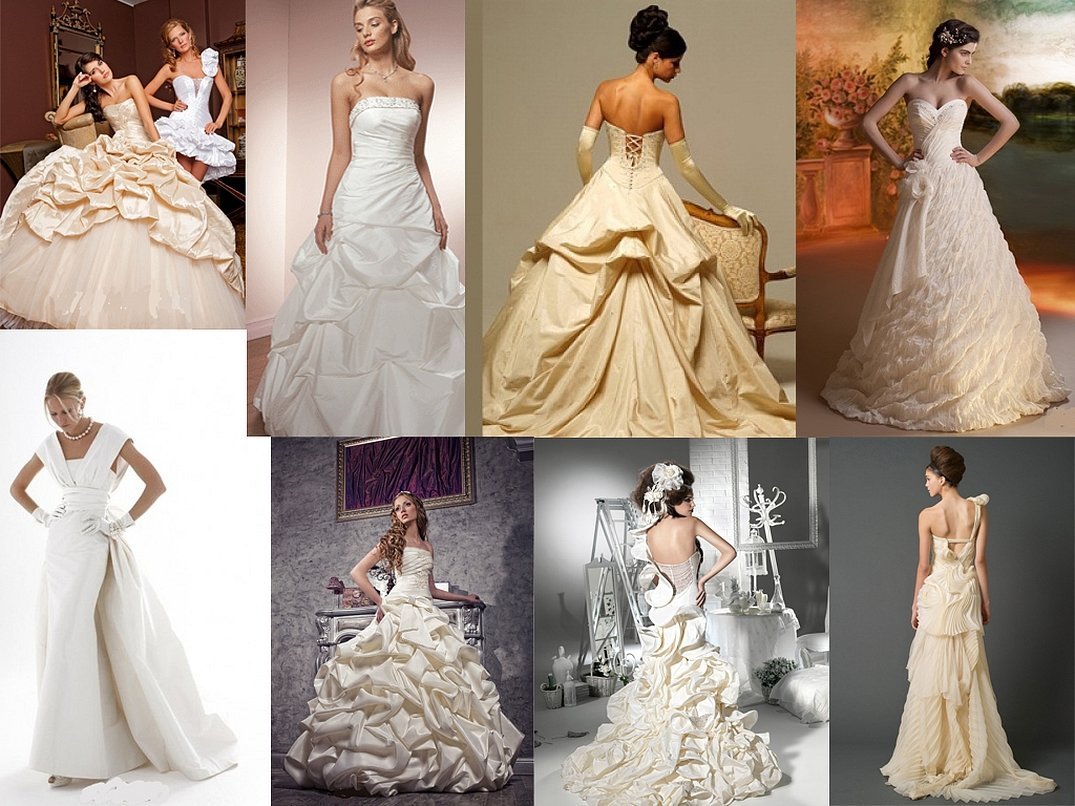
Often the fabric is used for draping ready-made products. Textiles fit perfectly into many types of interiors. It looks expensive and rich, which is why it becomes the basis for creating a festive outfit.
Proper care of taffeta products
Taffeta is a very delicate fabric that requires special care. Therefore, you need to know a few nuances regarding the different stages:
- It is advisable to wash in water at room temperature so that the fibers do not begin to shrink under the influence of temperature.
- Silk taffeta should not be wrung out – the water must drain off.
- You can only use care products for delicate fabrics.
- The items should be dried on a flat surface and covered with a light cloth on top.
- Set the iron to minimum, iron from the reverse side and only through wet gauze.
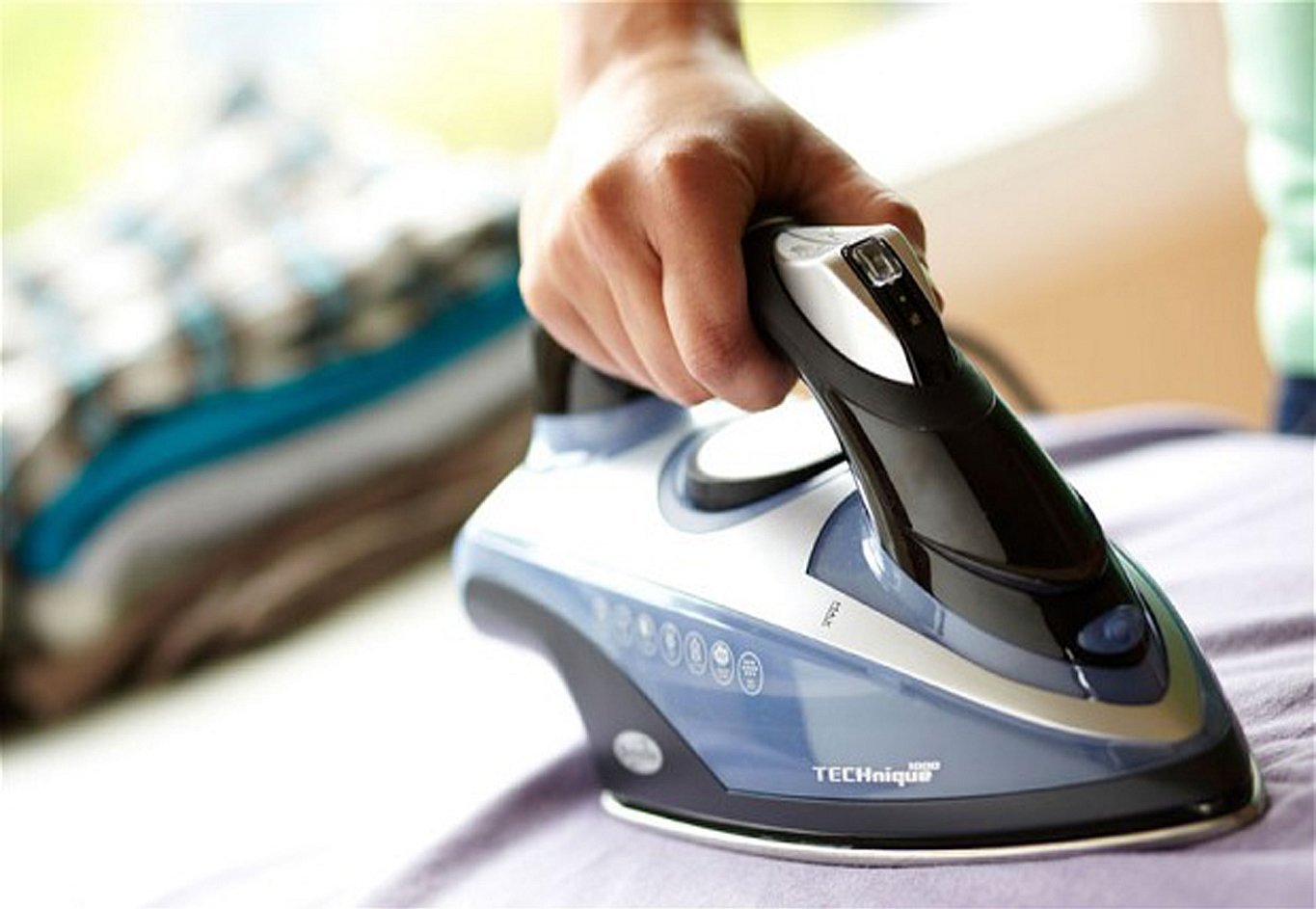
Important! Before you start washing or ironing a taffeta item, pay attention to the label markings. Additional care points are indicated here.
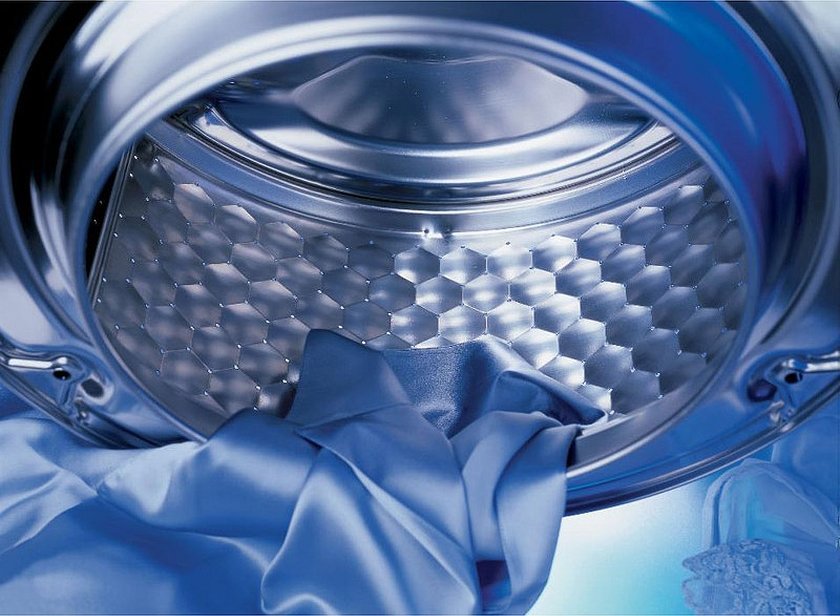
Depending on the composition of the canvas, additional conditions are determined that should be taken into account when caring for the material.
Advantages and disadvantages
Like any material, this one has its positive and negative qualities. Other properties may depend on the type of fiber and weaving method, but there are also unifying features:
- The tight fit of the threads does not allow water to pass through, so the fabric does not absorb moisture.
- During wear, the material retains its original appearance for a long time, the density and pattern do not wear off.
- If you take proper care of taffeta, the product will last for many years.
- The texture and structure of the fabric allows you to make any items from it, as it is easy to drape and process.
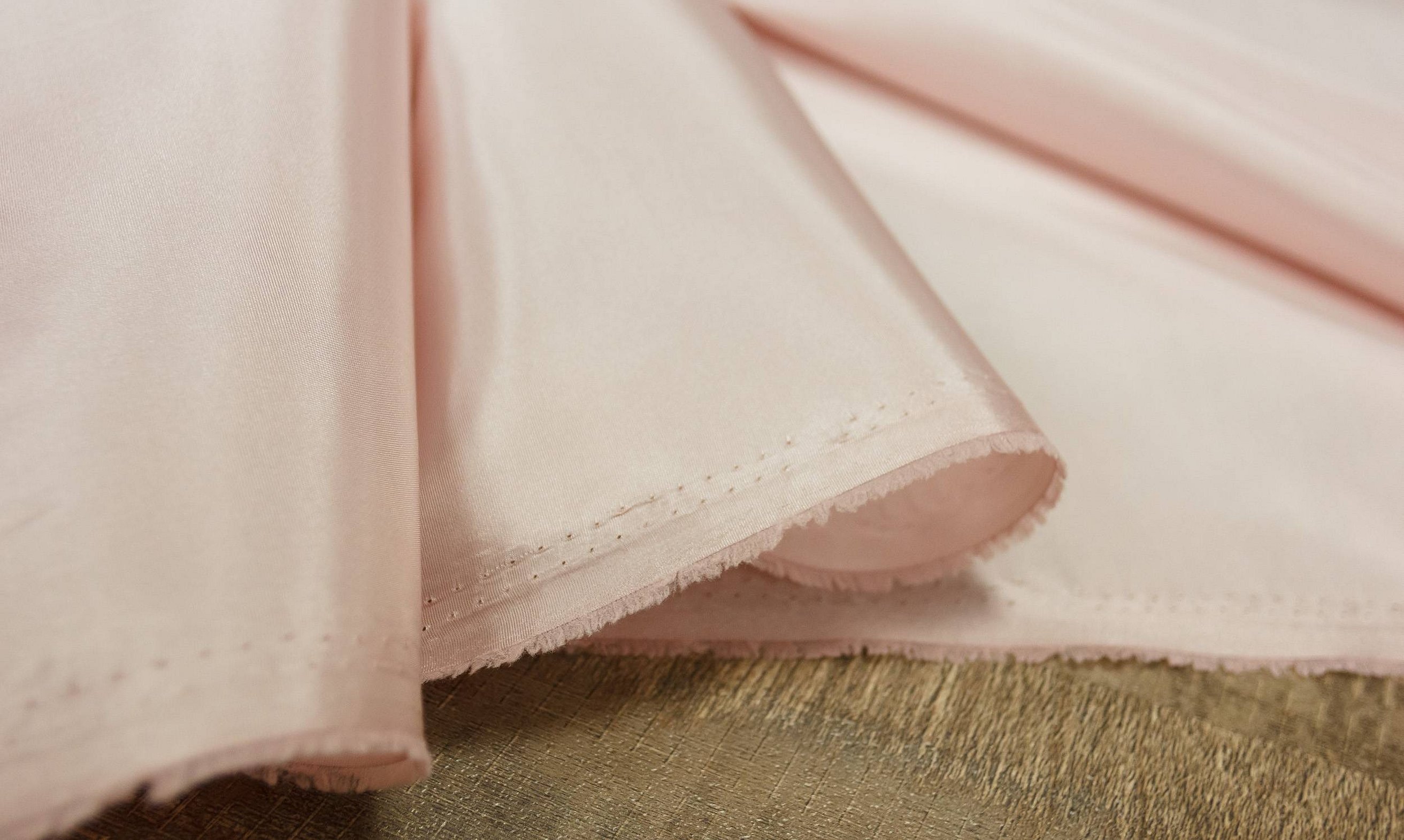
There are also minor flaws that are inherent to the fabric:
- During the cutting process, the threads fall out.
- May shrink in size as a result of washing.
- Textiles require delicate and careful care.
- Due to the special weave, it wrinkles quickly and is difficult to smooth out.
- Fabric made from natural materials is highly flammable and difficult to iron.
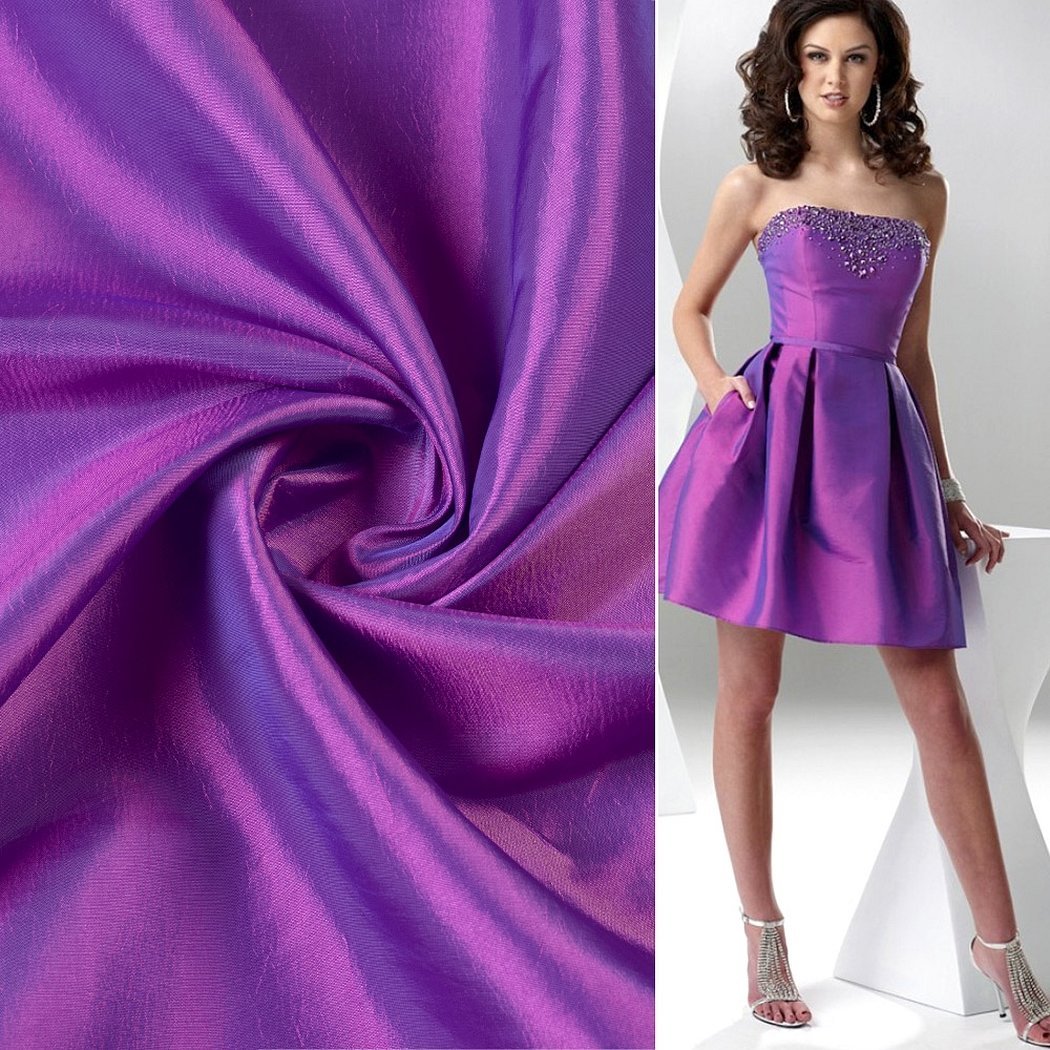
It is these shortcomings that are the reason why many people choose only taffeta party dresses and try to avoid items made of this material in everyday wear.
Taffeta material is popular due to its unique appearance and properties that are inherent to it. There are also negative properties - difficulties in care, problems in the cutting process, high price. But many designers use the fabric as a basis for evening and wedding dresses.




